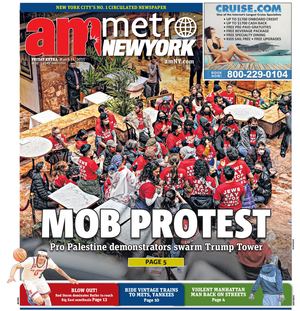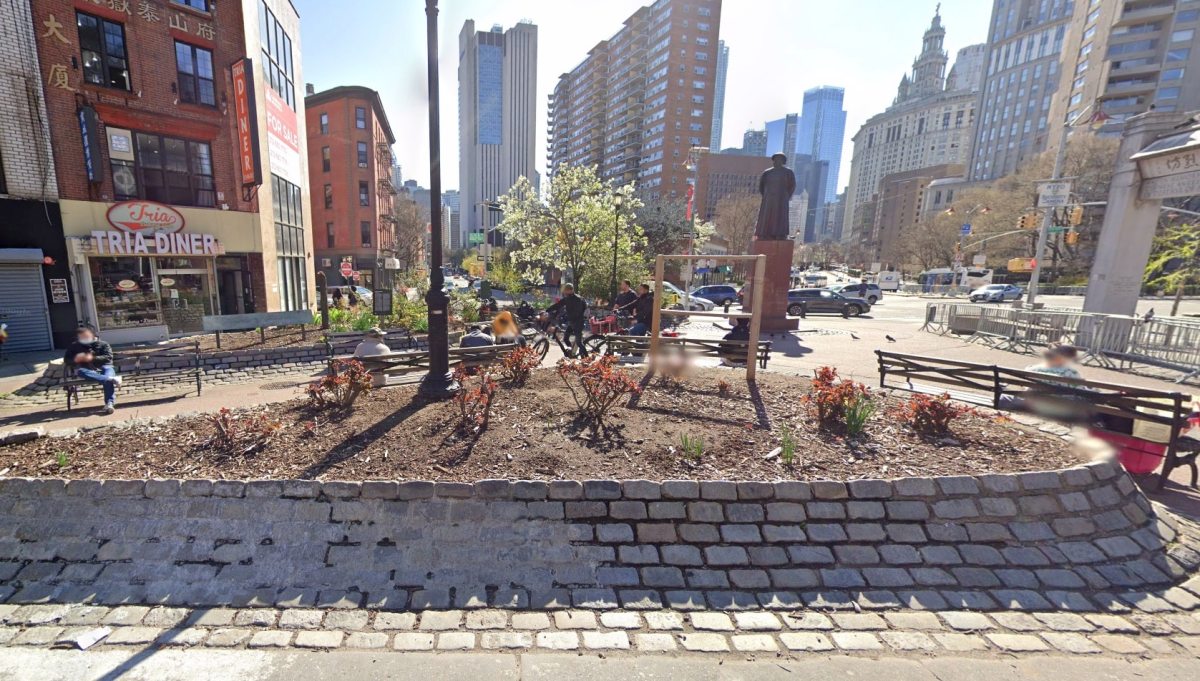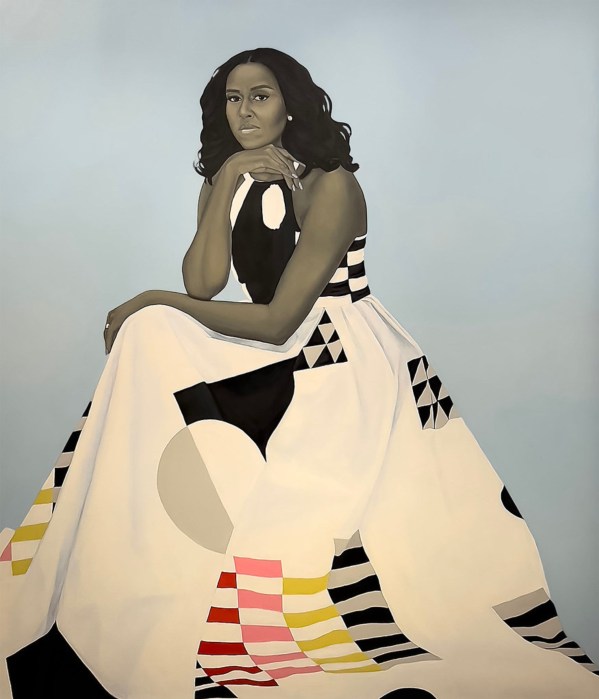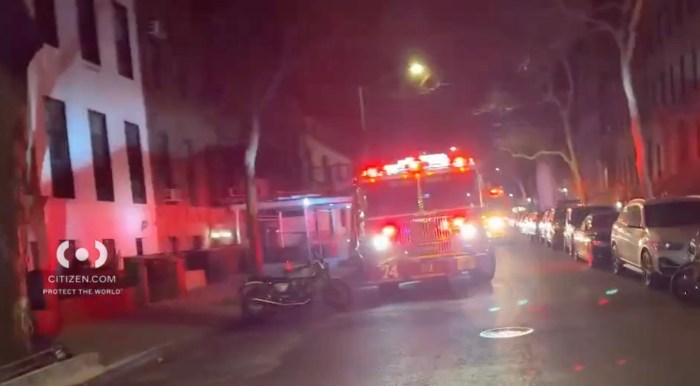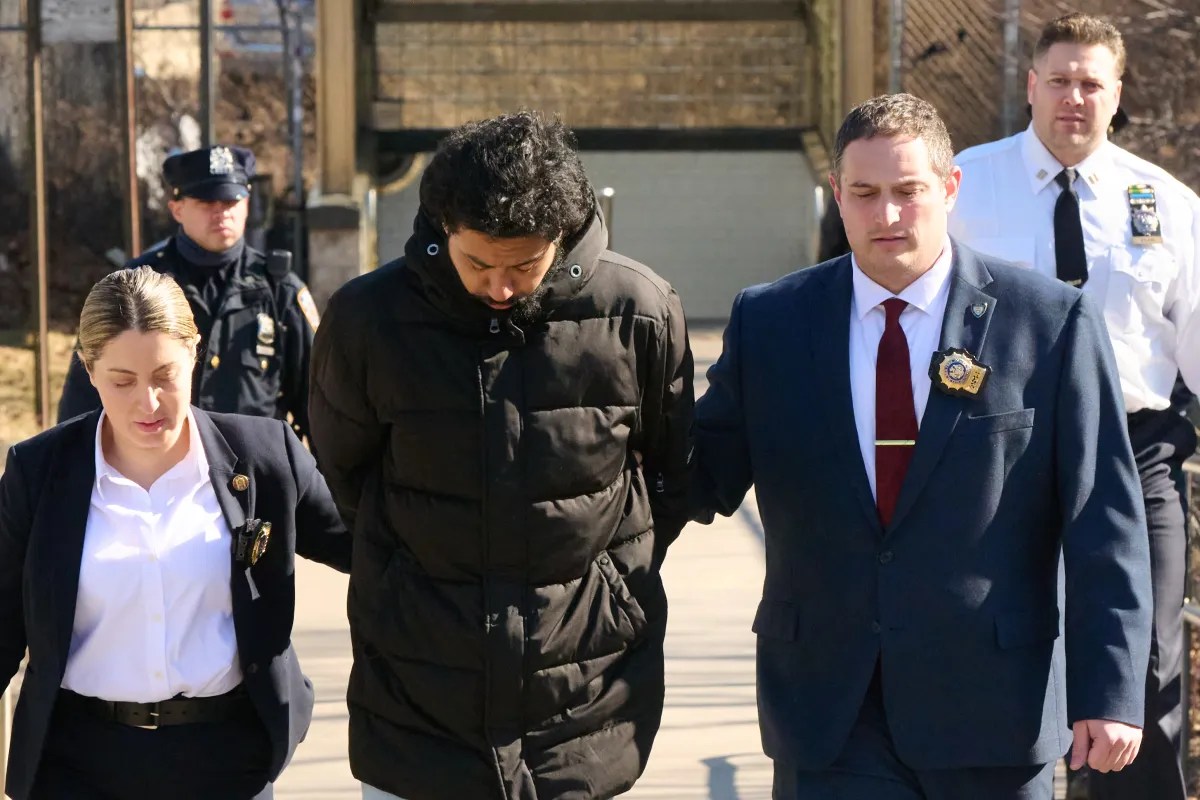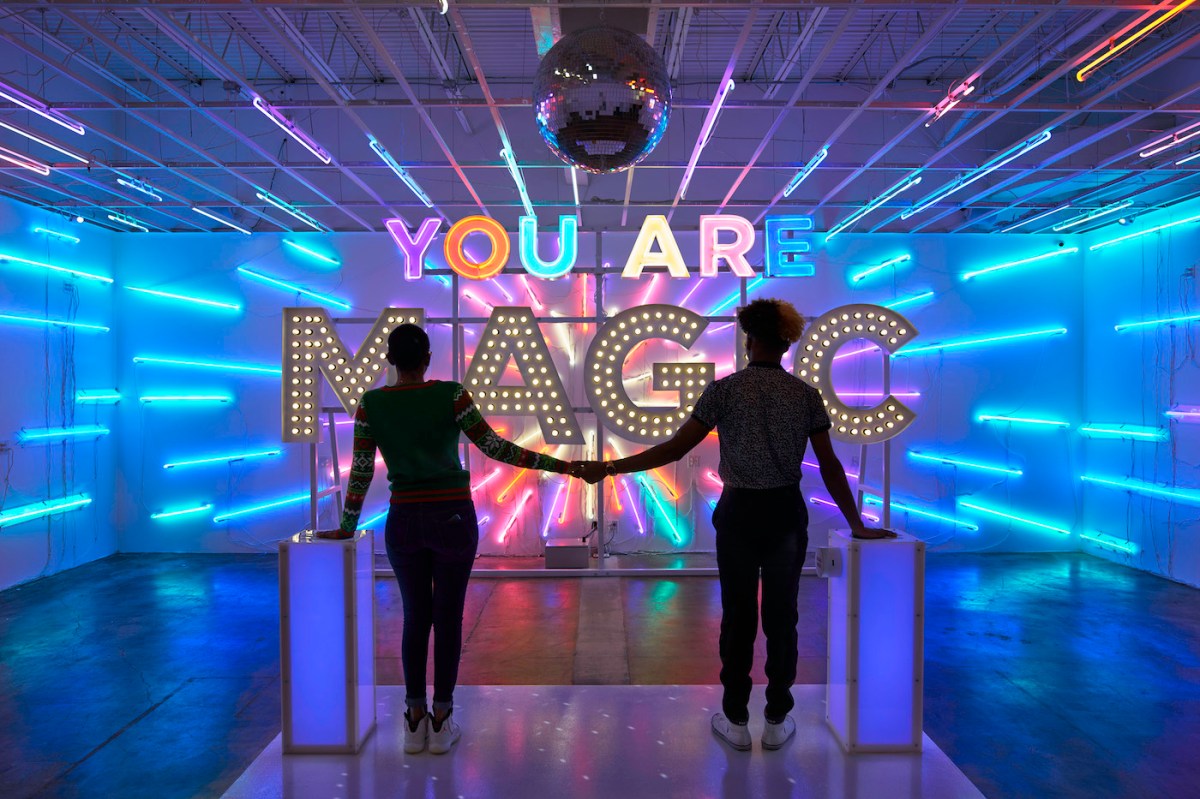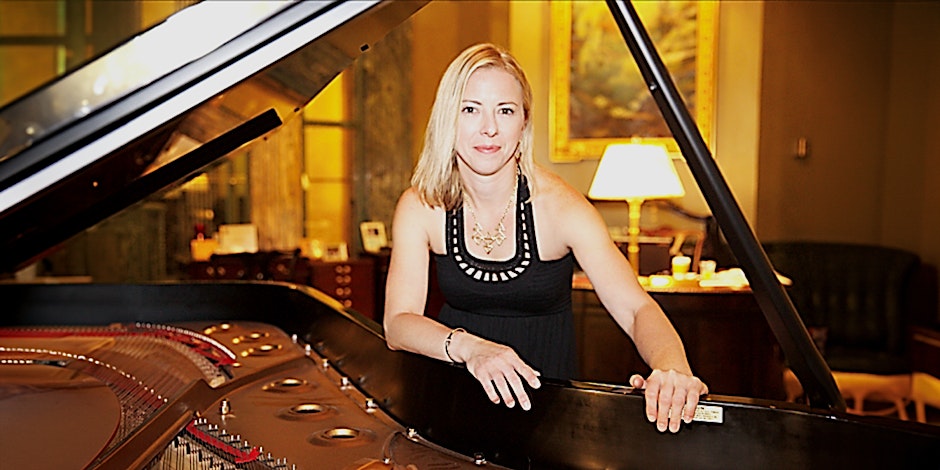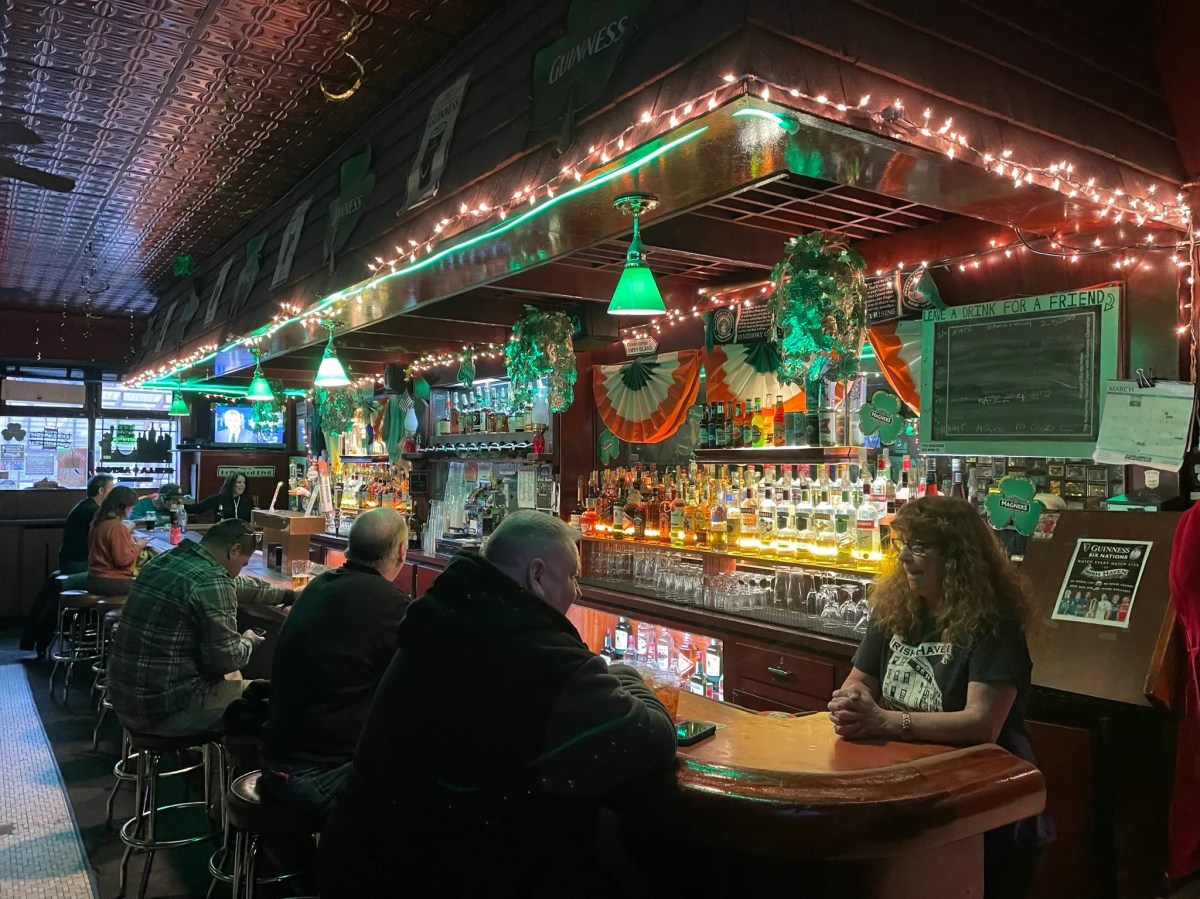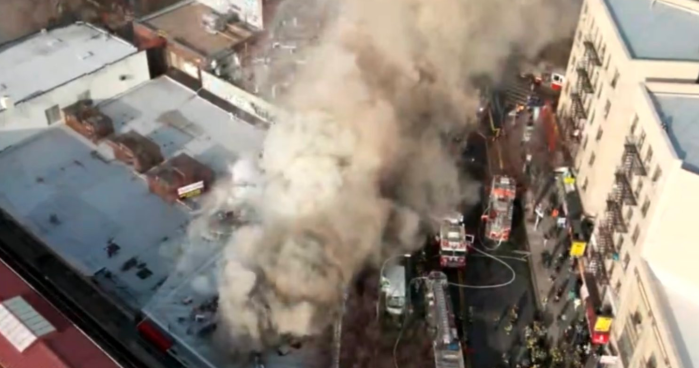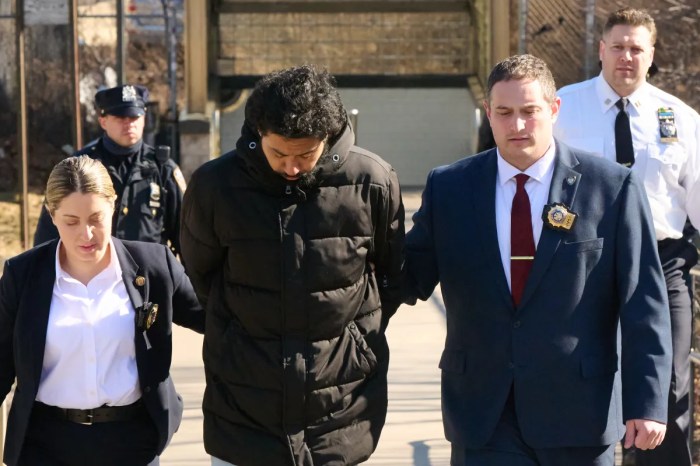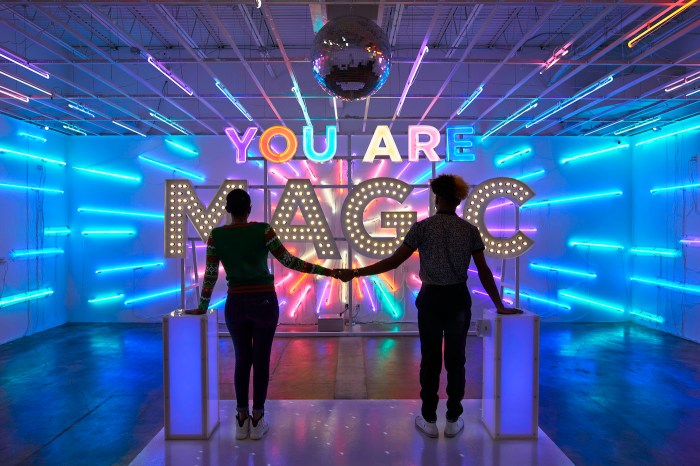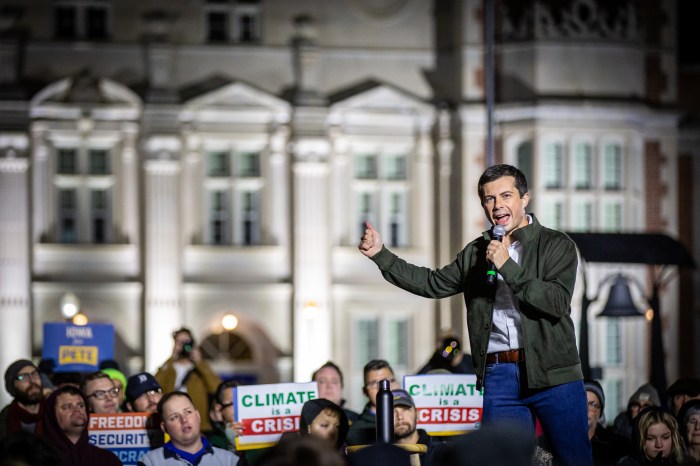Mayor Eric Adams is set to announce a $55.8 million redesign of a major plaza in Manhattan’s Chinatown that aims to give the neighborhood a new public space and “Gateway Arch,” during his State of the City address on Wednesday, amNewYork Metro has learned.
According to the Mayor’s office, Kimlau Square, which sits at the center of a six-way intersection at the edge of Chinatown in Lower Manhattan, will be redeveloped in three parts: expanding the square into a pedestrian plaza with shortened street crossings, building a new arch that will provide an entrance to the neighborhood and beautifying Park Row between the plaza and the Brooklyn Bridge.
The redesign is jointly funded by the city and the state, with the city contributing $44.3 million and the state pitching in $11.5 million, and was conceived through engagement with the Chinatown community, City Hall stated.
“Our joint $55 million investment will allow us to create world-class public space in an area which desperately needs it, bring order to one of the most chaotic intersections in New York City, and give one of New York City’s most historic neighborhoods the entrance it deserves,” Adams said in a statement.
The city will kick off the community engagement process for all three parts of the project in the next month, according to Ya-Ting Liu, the city’s chief public realm officer.
Liu said the project is a major expansion of an earlier effort supported by a state grant program — known as the Downtown Revitalization Program, which is the source of the state funding. She said that program, which doled out funding for the project a couple of years ago, involves a community engagement process, where area residents and organizations came up with ideas to improve the neighborhood together and submitted those that were most popular.
The state then awarded the $11.5 million grant to improve Kimlau Square, build the arch and redesign Park Row in late 2021, Liu said. But then the city agencies that actually had to implement the project — including the Parks and Transportation Departments (DOT) and the city’s Economic Development Corporation (EDC) — came to Liu with the idea of expanding the redesign.
“They said ‘hey, we think that there’s an opportunity here with the state funding to try to do something bigger,” Liu said. “And for the city to make an even bigger public realm impact here in the Chinatown community. It’s one of the densest neighborhoods in the city. It serves as a crucial sort of commercial transportation thoroughfare. It’s also one of the densest populations of seniors in New York City.”
Liu added that coming out of the COVID-19 pandemic, business leaders in the community have been voicing a need to direct more tourist foot traffic into the neighborhood. The area currently gets 26 million annual visitors, according to City Hall.
The Kimlau Square redesign will include “straightening” the complicated six-way intersection out, Liu noted, as well as shortening pedestrian street crossings and expanding the footprint of the public space from 12,000 to 20,000 square feet — a 66% increase.
The Park Row piece of the project, Liu said, aims to make it easier for people, especially tourists, to get from the foot of the Brooklyn Bridge to Chinatown. She said that includes improving signage and lighting so that pedestrians have a clearer idea of how to get from point A to point B, which is known as wayfinding.
“[It’s] just like clear demarcations that this is where you should be going as a pedestrian, like that you want to go, that it’s an inviting experience,” Liu said.
The third part of the project would for the first time bring a feature that is common in many Chinatowns around the country to the area: a welcome arch. The planning and design process for the arch is funded by a $2.5 million portion of the state grant, Liu said, but there will need to be additional fundraising to actually build it.
“I think the community, as part of this engagement, will understand that there’s got to be some additional sort of fundraising, from local community groups as well, to help secure the full funding amount that will be needed,” she said. “And what that dollar amount will be predicated on the design.”
